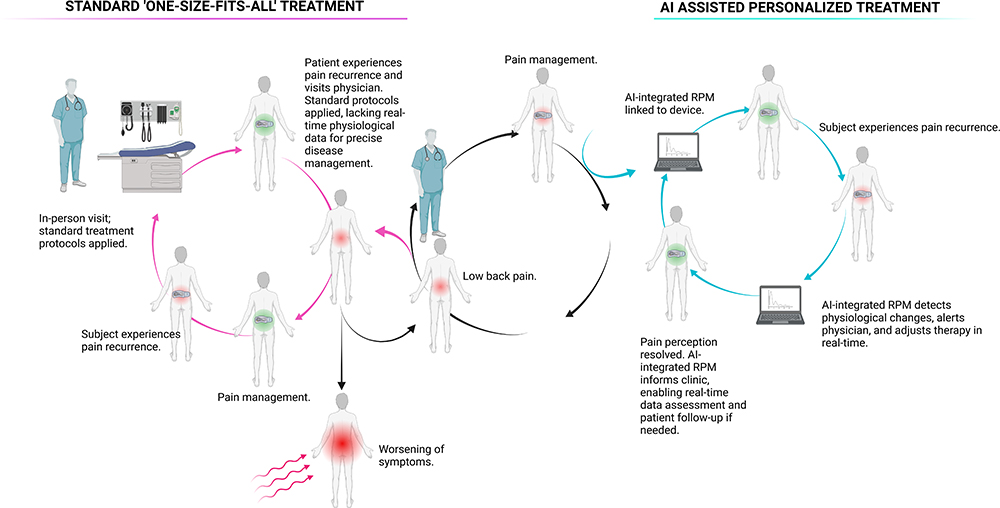
A Breakthrough in Mental Health: 4-Day Therapy Demonstrates Lasting Relief for Panic Disorder
A groundbreaking new method for mental health treatment is providing hope to countless individuals suffering from the overwhelming impacts of panic disorder. Recent findings published in BMC Psychiatry showcase the significant and enduring results of the “Bergen 4-Day Treatment” (B4DT), a focused therapy model created in Norway that offers both swift symptom relief and lasting progress over time.
Beyond Immediate Relief: The Enduring Strength of Targeted Therapy
Panic disorder—characterized by sudden and recurrent panic attacks and a lingering fear of future incidents—affects about 3.7% of people throughout their lives. Traditionally, treatment options, including weekly cognitive behavioral therapy (CBT) or medications, can aid in managing symptoms but often fail to provide enduring relief, particularly in more severe instances.
The Bergen 4-Day Treatment is altering that perspective.
In a recent longitudinal research study, Norwegian scientists tracked 30 patients diagnosed with panic disorder who underwent B4DT. They discovered that symptoms not only improved right after treatment, but the enhancements continued to intensify over time. By the 18-month assessment, an impressive 90% of participants were in remission. Pre-treatment panic symptoms, which averaged a score of 19.83, plummeted to just 2.60 during the long-term follow-up.
Key Insights from the Study
– Sustained Symptom Improvement: Patients noted continuous reductions in panic symptoms even after therapy ended, with significant advancements between the 3- and 18-month post-treatment evaluations.
– Wider Mental Health Benefits: Alongside relief from panic, participants reported diminished levels of depression and generalized anxiety—common co-occurring disorders.
– Strong Clinical Effect: The treatment’s effect size was remarkably large (d = 5.03), indicating substantial clinical importance.
– High Satisfaction Rate: 86.7% of participants considered themselves “very much improved” a year and a half post-program completion.
“The fact that patients keep improving over time is truly extraordinary,” remarked Kristen Hagen, psychologist and lead author of the study. “It challenges the idea that short-term therapy equates to short-term success.”
How the 4-Day Treatment Functions
The Bergen 4-Day Treatment significantly diverges from typical therapy methods in terms of duration and intensity. Rather than weekly sessions over several months, B4DT concentrates on four consecutive days of intensive, personalized therapy conducted in small group environments.
Each group contains three to six participants, paired with an equal number of therapists. The treatment’s core is immersive exposure therapy—encouraging patients to confront the situations, thoughts, and physical sensations that usually trigger anxiety or panic.
What sets B4DT apart is its cognitive approach: participants are not just asked to endure discomfort but are encouraged to actively reshape their attitudes toward anxiety-inducing situations. They transition from avoidance to intentional engagement, learning to respond to panic with openness rather than fear-based control.
Could this be the future model for managing panic disorder? Initial evidence strongly indicates so—but researchers advise further validation through larger, randomized controlled studies.
Broadening Perspectives: Implications for Mental Health Care
One of the most encouraging features of the B4DT is its potential scalability and accessibility. By finishing therapy in just four days, patients circumvent the lengthy commitment of weekly sessions—a significant hurdle for many due to work, family obligations, or geographic limitations.
Additional advantages include:
– Reduced dropout rates due to the shorter treatment duration
– Quicker relief for distressing symptoms
– More efficient use of mental health resources and staff
– Potential adaptability for other anxiety-related disorders
Significantly, the B4DT was initially designed for treating obsessive-compulsive disorder (OCD), where it has also showcased high effectiveness. Its successful modification for panic disorder suggests that this focused model could be broadly applicable across various anxiety and mood disorders.
Obstacles and Future Directions
Despite the hopeful findings, the research team recognizes limitations in the study, such as its small sample size and absence of a control group. Future investigations employing larger and more diverse populations along with randomized controlled methodologies will be vital to ascertain how generalizable and reproducible these results truly are.
Nevertheless, for patients, therapists, and healthcare systems alike, B4DT presents an exciting new option—one that emphasizes depth over duration and maximizes therapeutic impact in a fraction of the time.
Conclusion
In a time when waiting lists for mental health care continue to expand and resources are limited, the Bergen 4-Day Treatment presents a model that is both efficient and effective. By consolidating therapy into a targeted, four-day intervention that continues to yield benefits long after its conclusion, B4DT has the potential to signify a pivotal change in how panic disorder—and possibly other conditions—are treated globally.
As additional research continues to affirm its outcomes, the future for those experiencing panic disorder may not only be brighter—but closer than anyone anticipated.
Support Independent Science Reporting: Make a Difference